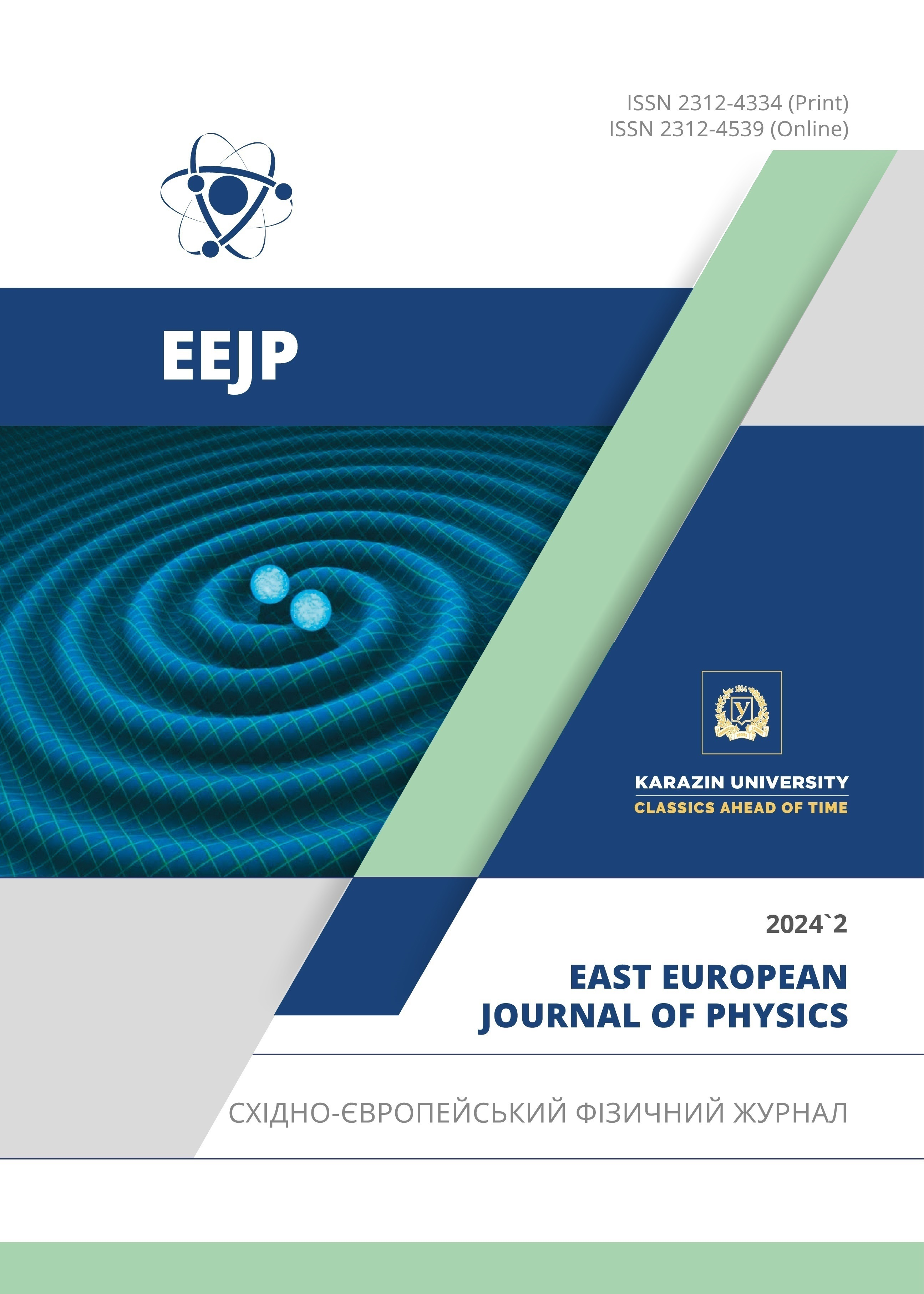New Trend of Automobile Aspects on MHD of Hybrid Nanofluid Flow Over a Porous Stretching Cylinder: A Numerical Study
Abstract
Heat transfer innovation is essential in modern society because thermal management systems need effective heating and cooling processes. It is also an essential component in the vehicle industry and other types of transportation, in addition to automobile industry, aviation technology, the computer industry, and the manufacturing industry. By the inspiration of importance of magnetohydrodynamic hybrid nanofluid over a stretching cylinder with the influence of Williamson fluid and porous medium is examined in this current study. To convert the PDEs into ODEs, suitable self-similarity transformation is used. After applying transformations, for graphical purpose we have used the bvp5c technique. The impact of active parameters affecting the fluid’s capacity to transfer significance is demonstrate in graphs and tables. In the result section we noticed on the velocity outlines decreased for increasing M parameter. The Cf and Nu increased for larger values of the M and curvature parameters. Additional properties of M and Rd parameter inputs result in improved temperature profiles.
Downloads
References
S. Choi, and J. Eastman, Enhancing thermal conductivity of fluids with nanoparticles, in: ASME International Mechanical Engineering Congress & Exposition, (San Francisco, CA, 1995). https://ecotert.com/pdf/196525_From_unt-edu.pdf
S.R. Reddisekhar Reddy, S. Jakeer, V.E. Sathishkumar, H.T. Basha, and J. Cho, “Numerical study of TC4-NiCr/EG+Water hybrid nanofluid over a porous cylinder with Thompson and Troian slip boundary condition: Artificial neural network model,” Case Stud. Therm. Eng. 53, 103794 (2024). https://doi.org/10.1016/J.CSITE.2023.103794
G. Ramasekhar, and P.B.A. Reddy, “Entropy generation on EMHD Darcy-Forchheimer flow of Carreau hybrid nano fluid over a permeable rotating disk with radiation and heat generation : Homotopy perturbation solution,” Proc. Inst. Mech. Eng. Part E, J. Process Mech. Eng. 2022, https://doi.org/10.1177/09544089221116575
G. Ramasekhar, and P.B.A. Reddy, “Entropy generation on Darcy–Forchheimer flow of Copper-Aluminium oxide/Water hybrid nanofluid over a rotating disk: Semi-analytical and numerical approaches,” Sci. Iran. 30(6), 2245–2259 (2023). https://doi.org/10.24200/sci.2023.60134.6617
S. Jakeer, and S.R.R. Reddy, “Electrokinetic membrane pumping flow of hybrid nanofluid in a vertical microtube with heat source/sink effect,” Eur. Phys. J. Plus, 138(6), 489 (2023). https://doi.org/10.1140/EPJP/S13360-023-04118-7
S. Jakeer, and P.B.A. Reddy, “Entropy generation on the variable magnetic fi eld and magnetohydrodynamic stagnation point fl ow of Eyring – Powell hybrid dusty nano fluid : Solar thermal application,” Proc. Inst. Mech. Eng. Part C: Journal of Mechanical Engineering Science, 236(13), 7442-7455 (2022). https://doi.org/10.1177/09544062211072457
I. Haider, U. Nazir, M. Nawaz, S.O. Alharbi, and I. Khan, “Numerical thermal study on performance of hybrid nano-Williamson fluid with memory effects using novel heat flux model,” Case Stud. Therm. Eng. 26, 101070 (2021). https://doi.org/10.1016/j.csite.2021.101070
P.T. Kapen, C.G.N. Ketchate, D. Fokwa, and G. Tchuen, “Linear stability analysis of (Cu-Al2O3)/water hybrid nanofluid flow in porous media in presence of hydromagnetic, small suction and injection effects,” Alexandria Eng. J. 60(1), 1525–1536 (2021). https://doi.org/10.1016/J.AEJ.2020.11.007.
A. Almaneea, “Numerical study on heat and mass transport enhancement in MHD Williamson fluid via hybrid nanoparticles,” Alexandria Eng. J. 61(10), 8343-8354 (2022). https://doi.org/10.1016/j.aej.2022.01.041
R. Gunisetty, P.B.A. Reddy, and A. Divya, “Entropy generation analysis on EMHD non-Newtonian hybrid nanofluid flow over a permeable rotating disk through semi analytical and numerical approaches,” Proc. Inst. Mech. Eng. Part E, J. Process Mech. Eng. (2023). https://doi.org/10.1177/09544089231199640
M.K. Nayak et al., “Thermo-fluidic significance of non Newtonian fluid with hybrid nanostructures,” Case Stud. Therm. Eng. 26, 101092 (2021). https://doi.org/10.1016/J.CSITE.2021.101092
J. Hartmann, and F. Lazarus, Hg-dynamics, 1937. https://gymarkiv.sdu.dk/MFM/kdvs/mfm 10-19/mfm-15-6.pdf
A. Tulu, and W. Ibrahim, “MHD Slip Flow of CNT-Ethylene Glycol Nanofluid due to a Stretchable Rotating Disk with Cattaneo-Christov Heat Flux Model,” Math. Probl. Eng. 2020, 1374658 (2020). https://doi.org/10.1155/2020/1374658
S.R.R. Reddy, and P.B.A. Reddy, “Thermal radiation effect on unsteady three-dimensional MHD flow of micropolar fluid over a horizontal surface of a parabola of revolution,” Propuls. Power Res. 11(1), 129–142 (2022). https://doi.org/10.1016/j.jppr.2022.01.001
N.S. Khashi’ie, N.M. Arifin, I. Pop, and N.S. Wahid, “Flow and heat transfer of hybrid nanofluid over a permeable shrinking cylinder with Joule heating: A comparative analysis,” Alexandria Eng. J. 59(3), 1787–1798 (2020). https://doi.org/10.1016/j.aej.2020.04.048
A.U. Awan, B. Ali, S.A.A. Shah, M. Oreijah, K. Guedri, and S.M. Eldin, “Numerical analysis of heat transfer in Ellis hybrid nanofluid flow subject to a stretching cylinder,” Case Stud. Therm. Eng. 49, 103222 (2023). https://doi.org/10.1016/j.csite.2023.103222
M. Umeshaiah, et al., “Dusty Nanoliquid Flow through a Stretching Cylinder in a Porous Medium with the Influence of the Melting Effect,” Processes, 10(6), (2022). https://doi.org/10.3390/pr10061065
H.A. Ogunseye, S.O. Salawu, and E.O. Fatunmbi, “A numerical study of MHD heat and mass transfer of a reactive Casson–Williamson nanofluid past a vertical moving cylinder,” Partial Differ. Equations Appl. Math. 4, 100148 (2021). https://doi.org/10.1016/j.padiff.2021.100148
F. Ahmad, S. Abdal, H. Ayed, S. Hussain, S. Salim, and A.O. Almatroud, “The improved thermal efficiency of Maxwell hybrid nanofluid comprising of graphene oxide plus silver/kerosene oil over stretching sheet,” Case Stud. Therm. Eng. 27, 101257 (2021). https://doi.org/10.1016/J.CSITE.2021.101257
Copyright (c) 2024 Gunisetty Ramasekhar, Y. Rameswara Reddy, Sura Sreenivasulu, Shaik Jakeer, Seethi Reddy Reddisekhar Reddy, Sangapatnam Suneetha, T. Aditya Sai Srinivas, Ashok Sarabu

This work is licensed under a Creative Commons Attribution 4.0 International License.
Authors who publish with this journal agree to the following terms:
- Authors retain copyright and grant the journal right of first publication with the work simultaneously licensed under a Creative Commons Attribution License that allows others to share the work with an acknowledgment of the work's authorship and initial publication in this journal.
- Authors are able to enter into separate, additional contractual arrangements for the non-exclusive distribution of the journal's published version of the work (e.g., post it to an institutional repository or publish it in a book), with an acknowledgment of its initial publication in this journal.
- Authors are permitted and encouraged to post their work online (e.g., in institutional repositories or on their website) prior to and during the submission process, as it can lead to productive exchanges, as well as earlier and greater citation of published work (See The Effect of Open Access).








